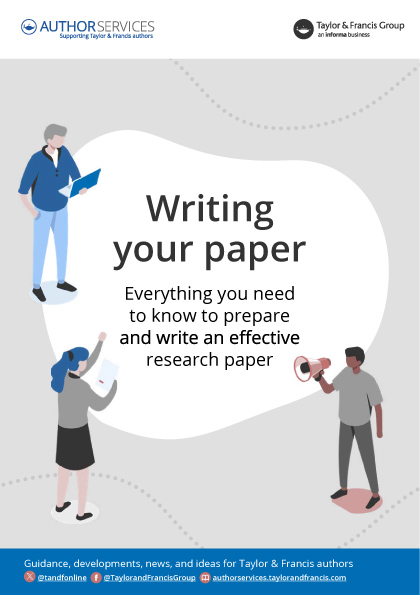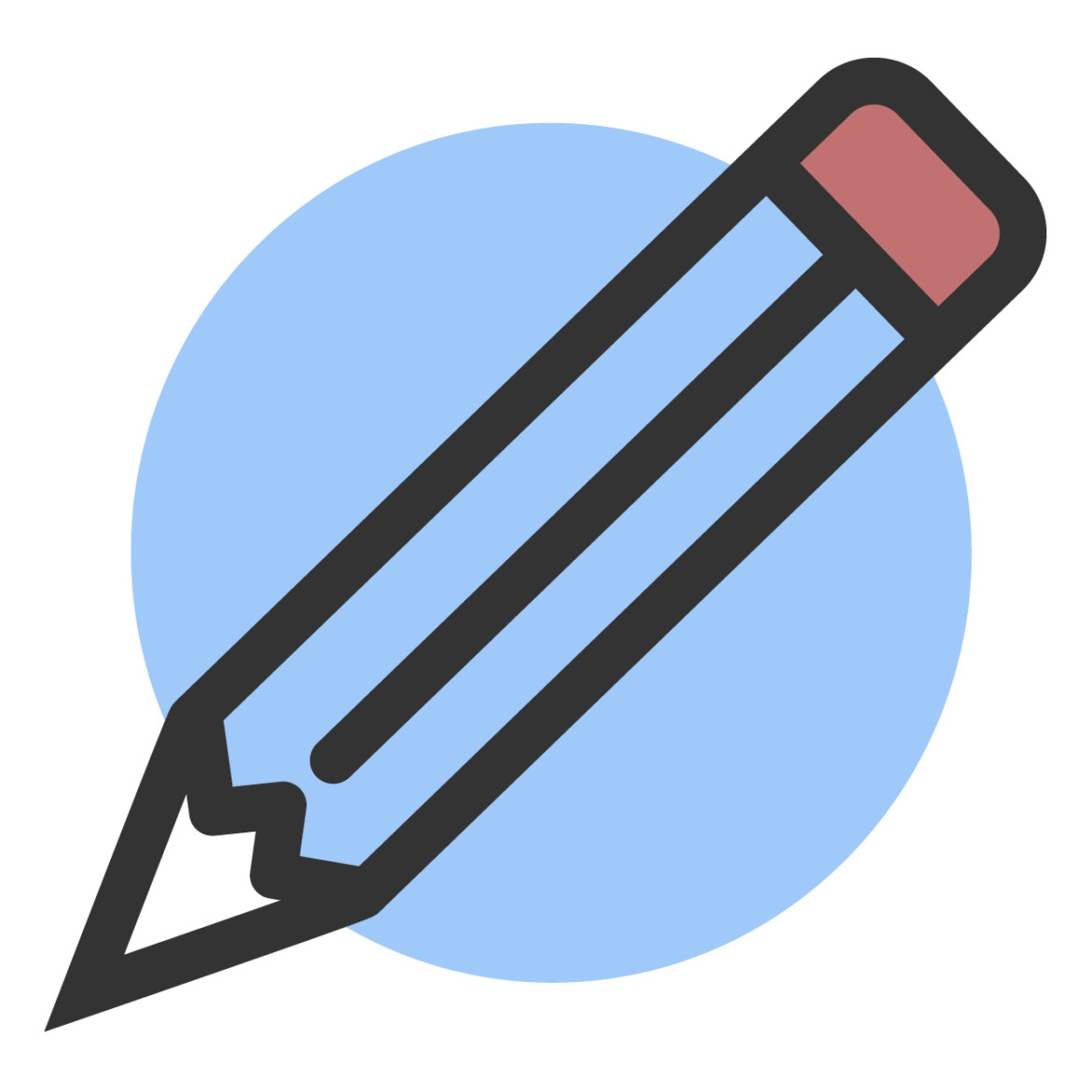Using keywords to write your title and abstract
Help people find your research with our advice on using keywords to describe your work
Writing your title and abstract are often the final things you do before you submit an article. However, it is very important not to rush this process as they are both crucial for making your article easy to discover and telling readers what they can expect to learn.
Follow the advice below to help you choose your keywords, and make sure your title and abstract are as effective as possible.
Choosing keywords for your research paper

Selecting the right keywords is how to start a good title and abstract, as well as helping the right readers find your article online.
When you submit your article you’ll usually need to include keywords. These will be used to index your article on Taylor & Francis Online and on search engines such as Google ScholarTM.
These keywords will help others find your article quickly and accurately. Think of them as the labels for your article. A strong correlation exists between online hits and subsequent citations for journal articles, therefore it is important to have effective keywords.
But how do you choose your keywords? Put yourself in the mindset of someone searching for articles on your topic, what words or phrases would you enter?
Before you begin your list, check the instructions for authors on your target journal’s homepage on Taylor & Francis Online. There may be specific journal requirements on how many keywords to choose. If they haven’t specified, you could look through a recent paper to get an idea.
Basic tips for creating your keyword list
Read through your paper and highlight any key terms or phrases that are most relevant to the focus of your work.
Draw up a shortlist.
Try searching with your keywords to make sure the results fit with your article and so you can see how useful they would be to others.
Narrow down your keywords to make sure they are as accurate as possible.
Review your final list and ask yourself, will these keywords be most effective at indexing my article online?
Sustainable Development Goal keywords
As more research continues to make important contributions to the UN Sustainable Development Goals (SDGs), we want to support authors in drawing attention to the relevance of their work.
We have recently introduced a set of SDG keywords to selected journals and these keywords will be used to tag papers related to each SDG. This tagging will better highlight the research to readers and enable readers to search for all papers on Taylor & Francis Online using that keyword, with the collection growing over time as tagged papers are published.
Use of these keywords is author-led, with authors determining if their submitted manuscript is relevant to one or more of the SDGs and choosing to add the keywords as appropriate. If a journal is offering SDG keyword tagging, you will be made aware of it in the Instructions for Authors.
Include the relevant SDG keywords within your manuscript file using the format of the keywords list shown below – see ‘The SDG keyword list’. On submission you will be given the option to add the relevant keywords to your submission via a keyboard dropdown menu.

How to write an effective title for your paper
Good writing titles should be concise, accurate, and informative, and it should tell the reader exactly what the article is about. This is where the keywords you’ve identified come in. It’s vital to incorporate your most relevant keywords in your title to make your article more discoverable in online searches.
The title should include 1-2 keywords, and these keywords should be within the first 65 characters of the title so that they are visible in the search engine results. This will help you produce an effective title.
Writing an effective title increases the potential audience for your article by making it more accessible to readers.
A good title for research paper should:
Incorporate the keywords, so that the article is more likely to be included in the results for relevant online searches.
Be understandable to a reader from outside its field.
Avoid abbreviations, formulae, and numbers.
Keep away from using “Investigation of…”; “Study of…”; “More about…”; “…revisited”.
Get straight to the point of what the article adds to the topic.
Editor’s view
Professor Mark Brundrett, Editor of Education 3-13
What is the abstract in a paper?
An abstract is ‘a few sentences that gives the main idea in an article or a scientific paper’ – definition of abstract from the Cambridge Academic Content Dictionary © Cambridge University Press.
The abstract section of a research paper is the selling pitch of your article. It is where researchers can get a quick insight and decide whether to continue reading and cite your content, or instead look elsewhere.
It’s worth spending time to write an abstract that will win readers over. Think about article abstracts that you have read in the past.
What qualities would encourage you to read the full article? Is there anything that would put you off delving any deeper into the article? Consider these factors when writing your abstract.
Here are some ideas on what to focus on, to achieve the purpose of an abstract in research paper:
What your research is about
What methods have been used
What you found out
Each journal will have its own word limit for abstracts which you’ll find in the instructions for authors, but approximately 100–200 words are what you have to work with. Check the guidelines for the word count before you start writing.
As you would expect, accuracy is crucial in a good abstract. Whatever you argue or claim in the abstract must reflect what is in the main body of your article. There’s no room for discussion, or introducing any further points.

Tips for writing an abstract
Make sure that your abstract is self-contained, without abbreviations, footnotes, or incomplete references.
It should be a concise summary that makes sense on its own.
Include keywords throughout, but make sure the writing still flows naturally.
You should also avoid including any images, background information or technical terms that may not be understood without further explanation.
There is a significant difference between original research papers and review papers when it comes to abstracts.

Example of a well-constructed title and abstract
You can see below a clear and concise title built around five keywords highlighting the main points covered in the article.
The keywords are also used throughout the abstract in a natural way, without affecting readability.
Modelling malaria dynamics with partial immunity and protected travellers: optimal control and cost-effectiveness analysis
Abstract
A mathematical model of malaria dynamics with naturally acquired transient immunity in the presence of protected travellers is presented. The qualitative analysis carried out on the autonomous model reveals the existence of backward bifurcation, where the locally asymptotically stable malaria-free and malaria-present equilibria coexist as the basic reproduction number crosses unity. The increased fraction of protected travellers is shown to reduce the basic reproduction number significantly. Particularly, optimal control theory is used to analyse the non-autonomous model, which incorporates four control variables. The existence result for the optimal control quadruple, which minimizes malaria infection and costs of implementation, is explicitly proved. Effects of combining at least any three of the control variables on the malaria dynamics are illustrated. Furthermore, the cost-effectiveness analysis is carried out to reveal the most cost-effective strategy that could be implemented to prevent and control the spread of malaria with limited resources.
Keywords: Malaria model, temporary immunity, protected travellers, optimal control, cost-effective analysis
Modelling malaria dynamics with partial immunity and protected travellers: optimal control and cost-effectiveness analysis by S. Olaniyi, K. O. Okosun, S. O. Adesanya & R. S. Lebelo is licensed under CC BY 4.0.
Abstract checklist
Have you clearly summarized the article?
Have you included your keywords?
Does it encourage researchers to read on?
Does it fit within the word count?
Is it easy to understand without any prior knowledge of the topic?

Video abstract
A video abstract lets you introduce readers to your article in your own words, telling others why they should read your research.
These short videos (three minutes or less) are published alongside the text abstract on Taylor & Francis Online and are an increasingly popular way of getting others to engage with published research, increasing the visibility of your work.

Graphical abstract
A graphical abstract is a useful tool that provides a concise, visual summary of the main conclusions of your article. It can be a great additional way to communicate your findings and is shown to potential readers in several places.
On Taylor & Francis Online you’ll see graphical abstracts on the journal’s table of contents page, on the article page itself, and in the PDF version of the article. Where there’s a print version of the journal, it’ll be included there too. Your graphical abstract can be an existing figure from your article if there’s something suitable, or it can be specifically designed for the purpose.
If you supply a graphical abstract, it will be shown in social media shares of your article. This is a great way to increase engagement with your article.
How should a graphical abstract be formatted?
Please make sure you follow these simple guidelines when formatting your graphical abstract:
Your image will often be displayed online at a width 525 pixels, so please make sure that the image is legible at this size.
The image should be saved as a .jpg, .png, or .tiff file.
Supply your graphical abstract as a separate file, labelled GraphicalAbstract1. Do not embed it in your manuscript file.
For optimal online display, your image should be supplied in landscape format with a 2:1 aspect ratio (2 length x 1 height).
A graphical abstract is mandatory for some journals, and for others it may be optional or may not be accepted at all. Always check the instructions for authors to make sure.

Example of a graphical abstract from Organic Eu3+-complex-anchored porous diatomite channels enable UV protection and down conversion in hybrid material by Xiaoshuang Yu, Lili Li, Yue Zhao, Xinzhi Wang, Yao Wang, Wenfei Shen, Xiaolin Zhang, Yanying Zhang, Jianguo Tang & Olle Inganäs, licensed under CC BY 4.0.
If you’d like to see some further examples of graphical abstracts then take a look at articles in Science and Technology of Advanced Materials and Journal of Coordination Chemistry.
Expert help for your manuscript
Taylor & Francis Editing Services offers a full range of pre-submission manuscript preparation services to help you improve the quality of your manuscript and submit with confidence.